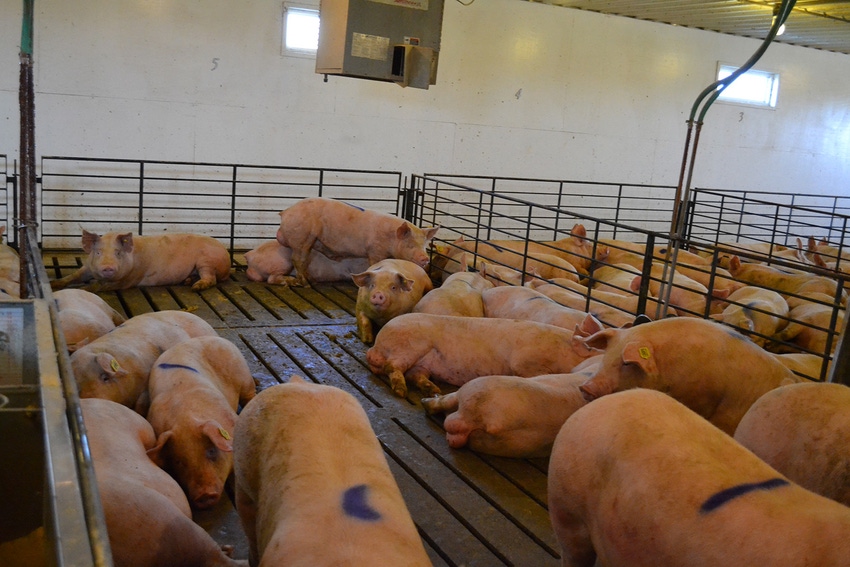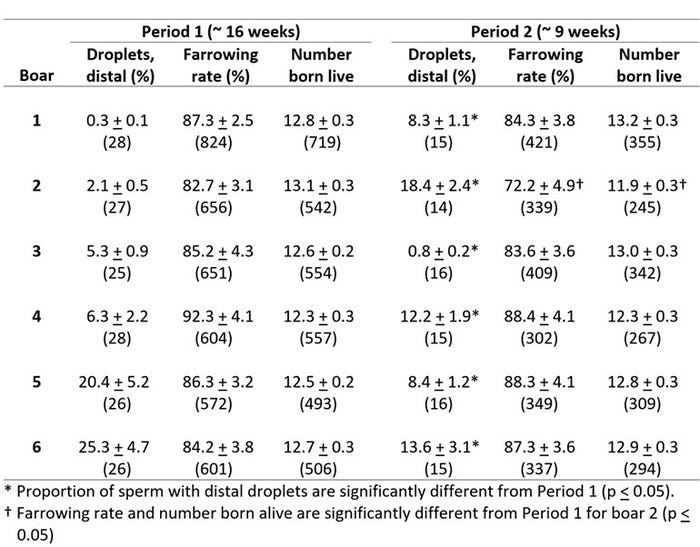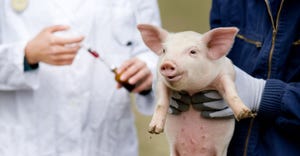Evaluate distal cytoplasmic droplets impact on boar fertility
A prudent approach would be to evaluate each boar on an individual basis by closely monitoring changes that occur over time and paying particular attention to increases greater than 15%.
November 27, 2018

By W.L. Flowers, North Carolina State University Department of Animal Science
One of the most frequently debated topics associated with semen quality is what to do with ejaculates that contain sperm with distal cytoplasmic droplets. All sperm possess cytoplasmic droplets when they leave the testicle and enter the epididymis. At this stage of their development, the droplets are located in the proximal position, or at the junction of the head and tail and sperm are infertile. Consequently, ejaculates with a high percentage of sperm with proximal cytoplasmic droplets have reduced fertility and should not be used for insemination doses.
During their transit through the epididymis sperm mature and acquire the ability to fertilize ova. Their cytoplasmic droplets migrate from the proximal position down the tail to the midpiece, or to the distal position, at which point they are released. This usually occurs just before sperm enter the cauda epididymis where they remain until ejaculation. Therefore, the location of the cytoplasmic droplet is often used as a “morphological assay” of sperm maturation. Ejaculates that have a high number of sperm with distal cytoplasmic droplets usually indicate that the length of time that sperm have spent in the epididymis has decreased or, conversely, the length of time required for their normal maturation has increased. Both of these situations typically are viewed as being counterproductive to the production of fertile sperm.
This is true if boars are exposed to suboptimal environments which are known to negatively affect sperm maturation, such as heat stress. However, there are an increasing number of reports from commercial studs with boars whose ejaculates normally have 10% to 30% distal cytoplasmic droplets without any indication that they were exposed to poor management. These observations pose the question as to whether these boars produce ejaculates that are subfertile due to impaired sperm maturation or whether they represent a situation in which maturation occurs normally but, for whatever reason, has become uncoupled from the loss of the cytoplasmic droplets. This question is very difficult to answer with prospective studies so evaluation of retrospective changes in these boars over time is an alternative approach.
Table 1 contains data from one such retrospective study. Changes in the proportion of sperm with distal droplets and their subsequent fertility was monitored for six boars over a period of about six months. Boars were 14 months old when the study began and exposed to the same management conditions including collection frequency. Ejaculate characteristics such as motility and total number of sperm per ejaculate were similar among all boars during the evaluation period. However, there was a significant change in the proportion of sperm with distal droplets for all six boars during the last two months of the evaluation period.

Consequently, ejaculate characteristics and fertility during the first four months (Period 1) were compared with those during the last two months (Period 2).
Unfortunately, these data don’t provide much guidance with regards to establishing definitive recommendations for acceptable levels of distal droplets in ejaculates. The proportion of sperm with distal cytoplasmic droplets varied considerably from a low of 0.3% to a high of 25.3% during Period 1 without a statistically significant association with either farrowing rate or number born live. The proportion of sperm with distal droplets increased significantly for Boars 1, 2 and 4 while it decreased for Boars 3, 5 and 6 during the last two months of the study.
However, changes in distal droplets were associated with fertility differences only for Boar 2 for which a 16% increase was associated with decreases of 10.5% and 1.2 piglets for farrowing rate and number born alive, respectively. For the other five boars, neither increases of 6% to 8% nor decreases of 4.5% to 12% had any effect on their reproductive performance. Clearly, additional research is needed to elucidate relationships among the proportion of sperm with distal droplets and boar fertility. However, in the interim, a prudent approach would be to evaluate each boar on an individual basis by closely monitoring changes that occur over time and paying particular attention to increases greater than 15%.
You May Also Like



